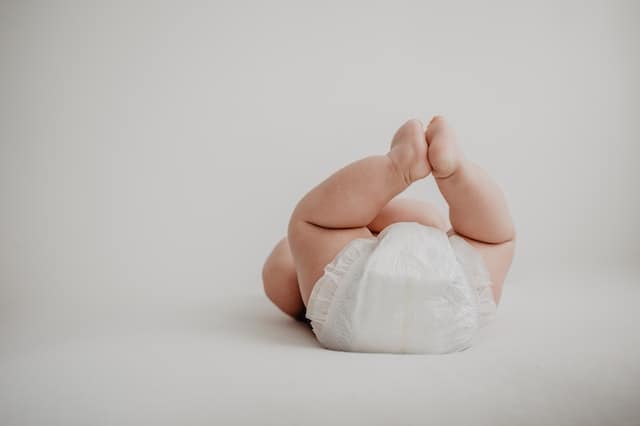It can be frustrating for new parents when their newborn seems to hate diaper changes. The crying, squirming, and resistance can make the process feel overwhelming and stressful.
However, it’s important to understand that this is a common issue that many parents face and there are ways to make diaper changes easier for both you and your baby.
Understanding why your newborn hates diaper changes can help you address the issue more effectively. There are many reasons why a baby might be uncomfortable during diaper changes, such as cold wipes, uncomfortable positions, or skin irritation.
By identifying the source of your baby’s discomfort, you can take steps to alleviate it and make diaper changes a more positive experience.
Key Takeaways
- Understanding why your newborn hates diaper changes is key to addressing the issue effectively.
- Creating a comfortable diaper changing environment and using effective techniques can make the process easier for both you and your baby.
- Building positive associations with diaper changes can help set the stage for successful potty training in the future.
Understanding Why Your Newborn Hates Diaper Changes
Diaper changes are an essential part of caring for a newborn. However, many parents find that their babies hate diaper changes. Understanding why your newborn hates diaper changes can help you make the process smoother and more comfortable for both you and your baby.
One reason why babies may hate diaper changes is because they feel cold and exposed. Newborns are used to being warm and snuggled up, so being exposed to the cool air can be uncomfortable for them. Additionally, the sensation of a cold wipe on their sensitive skin can be distressing.
Another reason why babies may hate diaper changes is because they don’t like being interrupted during play or sleep. Babies have short attention spans and can become easily frustrated when their routine is disrupted.
Diaper changes can also be uncomfortable for babies who are lying down and have to be moved around.
It’s also possible that your baby is experiencing discomfort or irritation from the diaper itself. Make sure to check the fit of the diaper and consider trying different brands or styles if your baby seems particularly unhappy during diaper changes.
To make diaper changes more comfortable for your baby, try warming up the wipes before using them, using a changing pad with a soft cover, and distracting your baby with a toy or song.
It’s also important to be gentle and patient during the process, as rushing can cause more stress for both you and your baby.
Overall, understanding why your newborn hates diaper changes can help you make the process smoother and more comfortable for your little one. By being patient and attentive to your baby’s needs, you can make diaper changes a more positive experience for everyone involved.
Common Reasons for Discomfort During Diaper Changes
Newborns can be quite fussy during diaper changes, and this can be a challenging experience for new parents. There are several reasons why a baby may be uncomfortable during diaper changes.
In this section, we will explore some of the most common reasons for discomfort during diaper changes.
Temperature Sensitivity
Newborns are sensitive to temperature changes, and this can make diaper changes uncomfortable for them. If the room is too cold, the baby may feel uncomfortable and start crying. On the other hand, if the room is too warm, the baby may become sweaty and irritable.
It is important to keep the room at a comfortable temperature during diaper changes to prevent discomfort.
Diaper Rash
Diaper rash is a common problem that can cause discomfort during diaper changes. It is caused by the skin becoming irritated due to prolonged exposure to moisture and friction. This can cause redness, swelling, and soreness.
To prevent diaper rash, it is important to change the diaper frequently and use a diaper cream to protect the skin.
Hunger and Reflux
If the baby is hungry or has reflux, they may be uncomfortable during diaper changes. Hunger can cause the baby to become fussy and irritable, while reflux can cause discomfort and pain. It is important to feed the baby before changing their diaper to prevent discomfort.
Power Struggle
Some babies may resist diaper changes because they feel a loss of control or a power struggle with their caregiver. This can cause them to become fussy and irritable during diaper changes.
It is important to be patient and gentle during diaper changes to prevent power struggles and make the experience more comfortable for the baby.
In conclusion, there are several reasons why a baby may be uncomfortable during diaper changes. By understanding these common reasons, parents can take steps to prevent discomfort and make the experience more comfortable for their newborn.
Creating a Comfortable Diaper Changing Environment
Maintaining a Warm Space
Newborns are sensitive to temperature changes and can easily get cold during diaper changes. To ensure that the baby stays warm, it’s important to maintain a warm space.
This can be achieved by keeping the room temperature between 68-72°F and avoiding drafts. A space heater can also be used to provide additional warmth if necessary.
Choosing the Right Changing Table
The changing table should be at a comfortable height for the person changing the baby’s diaper. It’s important to choose a table with a sturdy base and safety straps to keep the baby secure. A changing pad with a washable cover can also provide additional comfort for the baby.
Keeping a Distraction Handy
Newborns can become fussy during diaper changes, making the process difficult for both the baby and the caregiver. Keeping a distraction handy can help keep the baby calm and occupied.
This can be a toy, a mobile, or even a song. It’s important to choose a distraction that is safe and appropriate for the baby’s age.
Creating a comfortable diaper changing environment can make the process easier for both the baby and the caregiver. By maintaining a warm space, choosing the right changing table, and keeping a distraction handy, diaper changes can be a stress-free experience.
Effective Techniques to Make Diaper Changes Easier
Newborns are notoriously fussy during diaper changes, making the process a stressful experience for both parents and babies. However, with a few simple techniques, diaper changes can become a more manageable task.
Being Prepared
One of the most effective ways to make diaper changes easier is to be prepared. This means having all the necessary supplies within easy reach before starting the process.
A handy checklist of essential items can help ensure that nothing is forgotten. Some items to consider including are:
- Diapers
- Wipes
- Diaper cream
- Changing pad
- Spare clothes
- Distractions (toys, books, etc.)
By having everything ready before starting the diaper change, parents can focus on the task at hand and minimize fussiness from the baby.
Using Distractions
Distractions can be a lifesaver during diaper changes. Providing a toy or book for the baby to play with can help keep them occupied and less fussy. Singing a song or making funny faces can also be effective ways to distract the baby during the process.
Offering Control and Choice
Babies often feel a lack of control during diaper changes, which can lead to fussiness and resistance. Offering choices and control can help alleviate this feeling. For example, parents can ask the baby if they want to wear a specific diaper or choose between two different toys to play with during the process.
This gives the baby a sense of control and can make the experience less stressful.
Transitioning with Mindfulness
Transitioning from one activity to another can be difficult for babies, especially during diaper changes. Mindfulness techniques can help ease this transition. This means being present in the moment and focusing on the task at hand.
Taking deep breaths and speaking in a soothing tone can also help calm the baby during the process.
By using these effective techniques, parents can make diaper changes easier and less stressful for both themselves and their babies.
Editorial pick: Sudden Fear Of Diaper Change
Caring for Your Baby’s Hygiene
Newborns require proper hygiene care to keep them healthy and comfortable. This section outlines some essential tips for caring for your baby’s hygiene.
Proper Use of Wipes
Wipes are an essential tool for keeping your baby clean and fresh. When using wipes, it is essential to choose a high-quality product that is gentle on your baby’s skin. It is also important to use wipes correctly to avoid causing irritation or rashes.
When using wipes, start by wiping from front to back, especially for baby girls, to prevent the spread of bacteria. Use a clean wipe for each area to avoid transferring bacteria. After wiping, allow the area to air dry before putting on a new diaper.
Dealing with Diaper Rash
Diaper rash is a common problem that can cause discomfort and irritation for your baby. To prevent diaper rash, change your baby’s diaper frequently, and use high-quality diapers that fit well. Avoid using wipes with alcohol or fragrance, as they can cause irritation.
If your baby develops diaper rash, clean the area gently with water and pat dry. Apply a diaper rash cream with zinc oxide to soothe and protect the skin. If the rash persists or becomes severe, consult your pediatrician.
Handling Poopy Diapers
Poopy diapers can be messy and unpleasant, but they are a normal part of caring for your baby. To handle poopy diapers, start by wiping away any solid waste with toilet paper and then use wipes to clean the area thoroughly. Be sure to clean in all the creases and folds to prevent irritation.
After cleaning, dispose of the diaper and wipes in a diaper pail or trash can. Wash your hands thoroughly with soap and water to prevent the spread of bacteria.
By following these tips, you can help keep your baby’s hygiene in check and prevent common problems such as diaper rash. Remember to always be gentle and patient when caring for your baby’s delicate skin.
Building Positive Associations with Diaper Changes
Newborns can be fussy during diaper changes, making it a stressful experience for both the baby and the parents. However, it is important to build positive associations with diaper changes to make them less stressful for everyone involved.
Here are some tips to make diaper changes a more positive experience for your baby.
Incorporating Playtime
Incorporating playtime into diaper changes can make them more enjoyable for your baby. This can be as simple as making silly faces or singing songs while changing their diaper. You can also try giving your baby a toy to play with during the diaper change to distract them and make it a more positive experience.
Using a Special Toy
Using a special toy that your baby only gets during diaper changes can also help build positive associations with them. This toy can be something soft, colorful, and easy to manipulate. It should be something that your baby enjoys playing with and can keep them distracted during the diaper change.
Being Patient and Respectful
It is important to be patient and respectful during diaper changes, even if your baby is fussy or upset. Take your time and try to remain calm and collected. If your baby is upset, try talking to them in a soothing voice and reassuring them that everything is okay.
Respecting your baby’s boundaries during diaper changes is also important. If your baby is uncomfortable or upset, take a break and try again later. This will help your baby feel more comfortable and build positive associations with diaper changes over time.
By incorporating playtime, using a special toy, and being patient and respectful, you can help build positive associations with diaper changes for your baby. This will make diaper changes a more enjoyable experience for both you and your baby.
Looking Ahead: From Diaper Changes to Potty Training
Recognizing the Right Time
As the newborn grows, parents should start looking for signs that indicate that the baby is ready for potty training. Typically, this happens between 18 and 24 months of age, but it can vary from child to child.
Some signs that the child is ready for potty training include showing interest in using the toilet, staying dry for longer periods, and being able to follow simple instructions.
Standing Up Diaper Changes
As the baby grows and becomes more mobile, standing up diaper changes can become a useful option. This can make diaper changes easier and quicker, as the baby can stand and play while the parent changes the diaper.
However, it is important to make sure that the baby is safe and secure, and that there is no risk of falling or injury.
Preparing for Potty Training
Before starting potty training, parents should make sure that the child is physically and emotionally ready. They should also make sure that they have all the necessary equipment, such as a potty chair, training pants, and wipes.
It is also important to be patient and consistent, as potty training can take time and require a lot of effort.
Overall, transitioning from diaper changes to potty training can be a challenging but rewarding process. By recognizing the right time, using standing up diaper changes, and preparing for potty training, parents can help their child make this transition smoothly and successfully.
Conclusion
In conclusion, diaper changes can be a challenging time for both parents and newborns. It is common for newborns to dislike being changed, as it interrupts their activities and can be uncomfortable for them.
However, it is important for parents to remain calm and patient during these times, as their reactions can affect their baby’s behavior.
One way to make diaper changes easier for both parent and baby is to establish a routine. By changing the diaper at the same time every day, the baby will become more accustomed to the process and may be less resistant.
Additionally, parents can try distracting their baby with toys or singing songs to make the experience more enjoyable.
It is also important for parents to be prepared for diaper changes. Having all necessary supplies within arm’s reach can make the process quicker and smoother. Additionally, using high-quality diapers and wipes can prevent discomfort and irritation for the baby.
Overall, while diaper changes may not be the most enjoyable part of parenting, they are a necessary task. By remaining calm, establishing a routine, and being prepared, parents can make the experience more pleasant for both themselves and their newborn.
Frequently Asked Questions
How can I make diaper changes less stressful for my newborn?
Diaper changes can be stressful for newborns, but there are a few things you can do to make the process easier. First, ensure that the diaper changing area is warm and comfortable. You can use a changing pad or a soft blanket to make the area more cozy. Second, try to be quick and efficient when changing your baby’s diaper.
This will minimize the time your baby spends lying down and feeling uncomfortable. Finally, talk to your baby in a soothing voice and make eye contact to help them feel calm and reassured.
What are some common reasons why newborns dislike diaper changes?
Newborns may dislike diaper changes for a variety of reasons. Some babies may simply be uncomfortable lying down or having their clothes removed. Others may be sensitive to the temperature or texture of the diaper or wipes.
In some cases, babies may be experiencing diaper rash or other skin irritations that make diaper changes painful.
Are there any tricks to distract newborns during diaper changes?
Distraction can be a helpful tool when it comes to making diaper changes less stressful for your baby. Some parents find that singing a song or playing a game of peek-a-boo can help keep their baby entertained during diaper changes.
Others may use a special toy or mobile to provide visual stimulation and keep their baby’s attention focused elsewhere.
How often should I change my newborn’s diaper to avoid fussiness?
Newborns typically need to have their diapers changed every two to three hours, or whenever they become soiled or wet. Keeping your baby’s diaper clean and dry can help prevent diaper rash and other skin irritations that can cause discomfort and fussiness.
What are some signs that my newborn’s diaper may be causing discomfort?
If your baby is experiencing discomfort during diaper changes, there are a few signs to look out for. Your baby may cry or fuss more than usual, or they may squirm or wiggle during diaper changes. You may also notice redness or irritation on your baby’s skin, which can be a sign of diaper rash or other skin irritations.
Is it safe to use diaper rash cream on a newborn?
Diaper rash cream can be a helpful tool in preventing and treating diaper rash in newborns. However, it’s important to choose a cream that’s specifically formulated for use on newborns and to follow the instructions carefully.
If you have any concerns about using diaper rash cream on your baby, talk to your pediatrician for guidance.
https://www.youtube.com/watch?v=1trbZN6jOLQ

Iesha is a loving mother of 2 beautiful children. She’s an active parent who enjoys indoor and outdoor adventures with her family. Her mission is to share practical and realistic parenting advice to help the parenting community becoming stronger.



